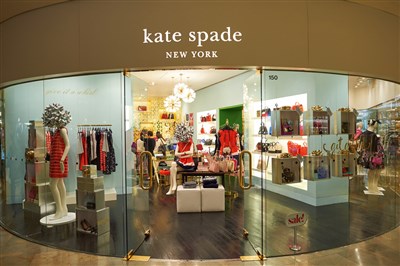
It would be easy to brush aside Tapestry (NYSE:TPR), the company behind major luxury handbag names like Coach and Kate Spade, as a relic of an earlier time. After all, with so many places closed outright or merely deeply curtailed, the value of a designer handbag seems a bit less than it once was. However, some new analyst appraisals are giving Tapestry some new life in the market, and an overall consideration of its path forward suggests it may be set to weather the storm.
The Changing Analyst Landscape
The most recent news for Tapestry features a change in analysts' perception. As points go, it's a bit subjective; analysts have been wrong before and disagreeing with an analyst is sometimes as easy as finding a completely different analyst to talk to. With Tapestry, though, this is a bit different, as our latest research found.
Earlier today, Cowen upgraded its assessment of Tapestry from “market perform” to “outperform,” and raised its price target from $25 per share to $30. That may not mean much in isolation, but it actually joins a larger body of increasingly positive commentary toward Tapestry. The last week of October alone featured six different analysts modifying their price targets on Tapestry. Though the hikes were of different degrees, most, on a percentage basis, were substantial.
The consensus also maintains a buy, and for the last month, that consensus has been stronger than it's been in months. Six months ago, the company had 15 “hold” ratings and nine “buy”, and now, it's at 10 “hold” ratings and 16 “buy” ratings. The buy / hold ratio has effectively been inverted. The price target is likewise now higher than it's been in six months, standing at $23.55 against $20.84 six months ago.
But Don't They Just Sell Overpriced Purses?
There's clearly a lot of analyst support for Tapestry, and trying to pin down potential reasons for that support gives us insight into whether or not this is really the buy that a growing number of analysts think it is. One report suggests that the possible growth vectors for the company actually haven't been priced into the stock yet as a whole, meaning that there's quite a bit of new potential upside that the market hasn't fully appreciated as yet.
The earnings report released back in October—interestingly enough, when all those price targets shifted upward—lends some credence to this concept, and a look at what Tapestry is doing in the field certainly doesn't hurt either.
Easily one of the biggest things that Tapestry is doing is quietly pulling out of the brick-and-mortar market. The first quarter of its fiscal 2021 saw the company moving back toward profitability, even after the disaster that was the March-May market for almost everyone in the United States who wasn't selling hand sanitizer.
Tapestry's move to increase its selling online gave it new life in several ways; not only was it actually able to sell in a market where many stores were closed by government mandate, but it was also able to take advantage of the lower costs inherent in online selling. When your focus is heavily e-commerce, you can offer goods in a market that doesn't require rent payments, utility payments, or property taxes. Despite the fact that revenue was down 21% in the quarter, profitability was up, with a 37% increase in operating income because they could slash expenses to the bone.
Taking Advantage of a Changing Marketplace
When Tapestry can post results like that, it demonstrates that there's a real value in improved e-commerce focus. At last report, Tapestry looks to continue on this path, closing more stores—particularly those under the “Stuart Weitzman” brand, as these have the worst retail performance—and bolstering the online shopping component. Even as customers start returning to stores, there's still a clear economic value in moving to online selling. It not only protects against potential lockdown events, that may still actually happen, but it also offers a way to sell products at much lower costs.
Moreover, online selling also improves customer data gathering, since the entire transaction is a data function anyway. That allows more raw material for analytics tools to use, and Tapestry is increasingly turning to analytics; it's bringing in several tools from Amperity to help improve the customer experience and give Tapestry better measurements on its internal operations.
A choice to invest often comes down to a measure of profitability. Since profitability is generated as a function of both revenue and expense, reducing expenses produces profitability as much as increasing revenue does. It would be easy to brush aside Tapestry as a luxury handbag maker, but it's figured out the fundamental truth of improving profitability. That alone makes the company worth another look.
Companies in This Article: